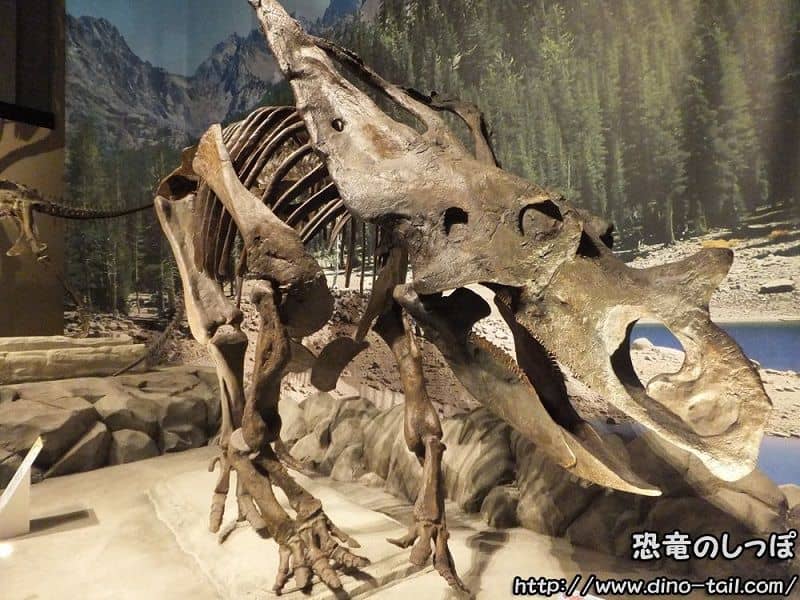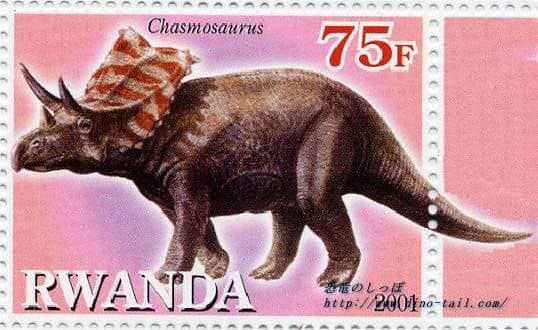About Chasmosaurus
| Scientific Name (Genus) | Chasmosaurus |
| Meaning of Name |
Opening lizard
chasma (large opening) [Greek] - saurus (lizard) [Greek] |
| Classification | Ornithischia, Marginocephalia (Ceratopsia) |
| Total Length | Approx. 5-8m |
| Diet | Herbivorous |
| Period | Late Cretaceous |
| Species |
Chasmosaurus belli
Chasmosaurus russelli? |
| Year of Paper Publication | 1914 |
| Genus Name Publication | Lambe, Lawrence Morris. (1914). On Gryposaurus notabilis, a new genus and species of trachodont dinosaur from the Belly River Formation of Alberta, with a description of the skull of Chasmosaurus belli. The Ottawa Naturalist, 27. |
Characteristics
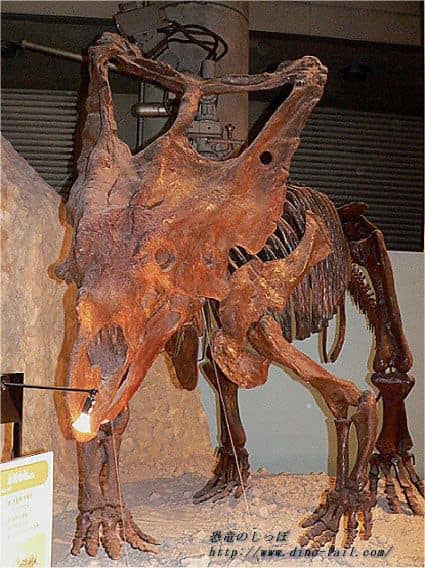
The name Chasmosaurus means "opening lizard."
True to its name, the frill of its skull had large openings, believed to be for reducing the weight of the head.
When viewed from the front, the frill also resembles a heart shape.
Like Triceratops, Chasmosaurus was a ceratopsian with three horns on its head. Although there was individual variation, the horns above its eyes were not as developed as those of Triceratops.
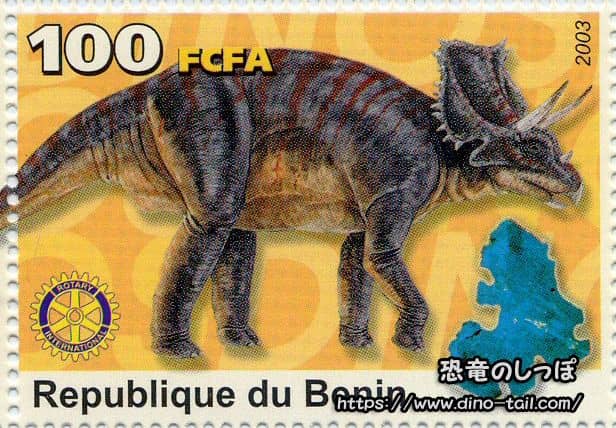
Its frill was long vertically and was one of the largest among ceratopsians. It had little curvature and was relatively straight vertically.
Did They Form Herds?
A large accumulation of Chasmosaurus fossils was found in Alberta, Canada.
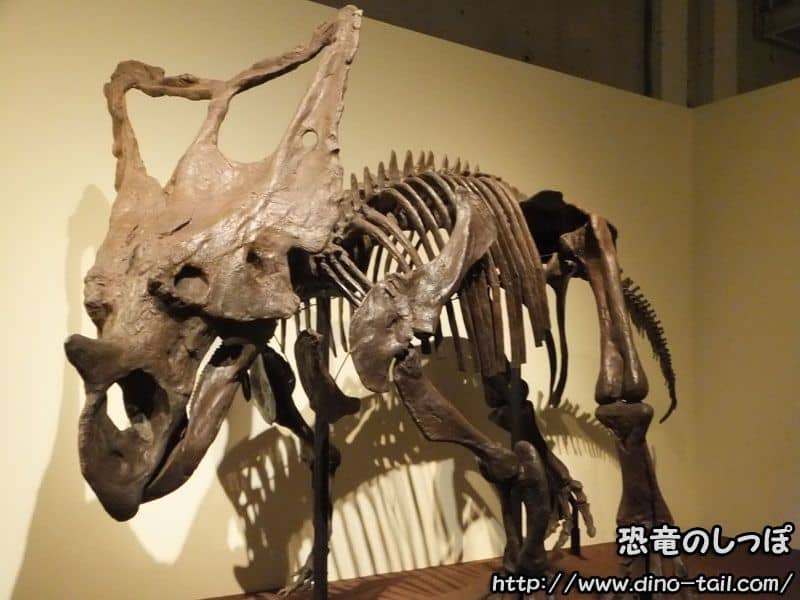
It is believed that a large number of Chasmosaurus were washed together and accumulated in one place by a flood. This suggests they may have lived in herds. In fact, it is known that related ceratopsians did live in herds.
At the "Dino Expo 2016" held at the National Museum of Nature and Science, skeletal fossils of adult and juvenile Chasmosaurus were displayed alongside an illustration of a Chasmosaurus herd (by illustrator Shiko kikuya). It is clear that the juvenile's head is proportionally larger to its body compared to the adult, much like a human baby.
The Story of Chasmosaurus Species and Growth
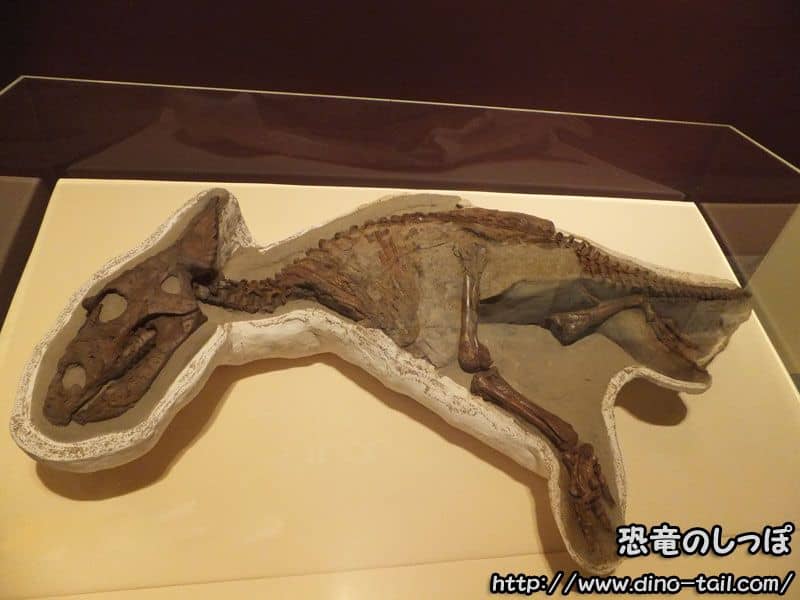
Estimated to be less than one year old
Several species have been proposed for the genus Chasmosaurus in addition to the type species, "Chasmosaurus belli," but their classification is not straightforward. This is because the shape of the frill and horns of ceratopsians changed dramatically as they grew.
In juvenile fossils, the frill is still small and lacks the characteristic shape of an adult. As they grew, the frill extended significantly backward, and the hornlets (small horns) on its edge also developed. For this reason, it has been suggested that fossils previously thought to be different species might actually represent different growth stages of Chasmosaurus, or differences between males and females (sexual dimorphism).
From Chasmosaurus to Vagaceratops: "Chasmosaurus irvinensis," once considered a species of Chasmosaurus, was reclassified as a new genus, "Vagaceratops," in 2010 after further research showed significant differences in its frill characteristics. As this example shows, dinosaur classification is constantly being updated with new discoveries and research.
Discovery and Publication
In 1913, American fossil collector Charles Hazelius Sternberg discovered several specimens, including a completely preserved skull, in Alberta, Canada. These specimens were sent to Lawrence Morris Lambe at the Geological Survey of Canada and were described under the genus name "Protorosaurus," meaning "before Torosaurus."
However, it was discovered that the name "Protorosaurus" was already in use for another reptile from the Permian period, so it was renamed Chasmosaurus in 1914.
Although Lambe used a specimen found by others in 1913 to describe the genus, it is now known that Lambe himself had found a Chasmosaurus skull earlier, in 1898. This fact was not realized until 1990, 70 years after Lambe's death.
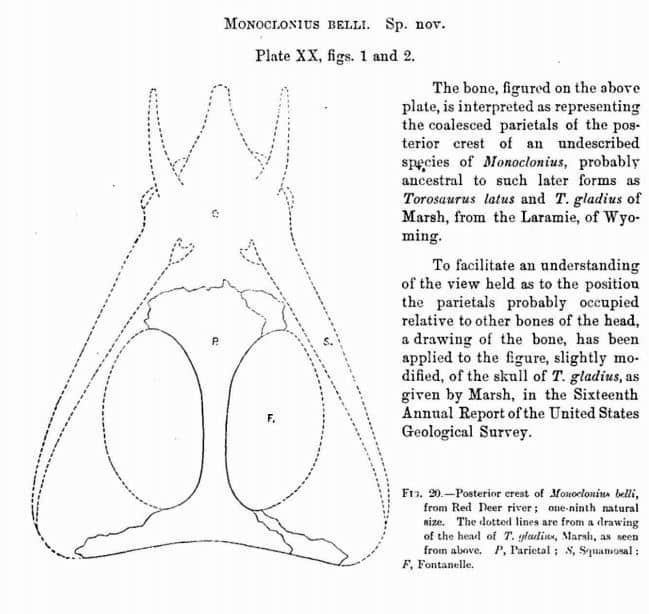
Source: Lambe, Lawrence M. (1902). New Genera & Species from the Belly River Series. Geological Survey of Canada Contributions to Canadian Palaeontology, 3.
In 1898, Lawrence Lambe discovered a partial ceratopsian skull frill in the Berry Creek formation of Alberta, Canada. He believed this skull fossil (specimen NMC 491) belonged to a species of Monoclonius and described Monoclonius belli in 1902. In 1915, "Monoclonius belli" was redescribed as Eoceratops, but in 1990, biologist Thomas Lehman of Texas Tech University showed that "Monoclonius belli," later Eoceratops belli, discovered by Lawrence Lambe in 1898, is in fact attributable to Chasmosaurus.
Chasmosaurus Stamp & Fossil Gallery
